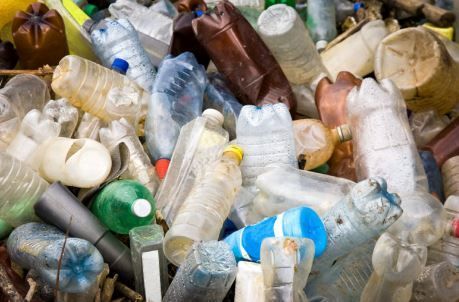Biodegradable plastic not as degradable as advertised

Plastic has come to replace metal, glass and many other materials in a variety of industries and for many purpose from storing fuel to wrapping leftover food. However, one problem with the emergence of prevalent plastic bottles, containers and materials is that they don't breakdown the same way as other material in landfills.
To combat this growing pollution issue, engineers developed plastic that can biodegrade. However, the plastic that has all the convenience and versatility of traditional plastic but none of the environmental impact may actually be too good to be true. According to a new study from Michigan State University scientists, plastics that are engineered to degrade don't breakdown as expected.
Degradable plastic doesn't breakdown
Published in the American Chemical Society journal Environmental Science & Technology, a study on degradable plastics found that they broke down at roughly the same rate as more traditional plastic – not faster.
Researchers simulated landfill conditions by increasing UV levels and manipulating gases to test the plastics, because that's where the majority of plastic products end up. However, under simulated conditions or when simply buried under soil for three years, products containing the additives said to aid the plastic's breakdown showed no difference in how the product degraded, even when examined on a molecular level.
"In this study, we evaluated the effect of biodegradation-promoting additives on the biodegradation of polyethylene and polyethylene terephthalate," the study authors explained. "Biodegradation was evaluated in compost, anaerobic digestion, and soil burial environments. None of the five different additives tested significantly increased biodegradation in any of these environments. Thus, no evidence was found that these additives promote and/or enhance biodegradation of PE or PET polymers."
How are degradable plastics supposed to work?
Although researchers haven't found biodegradable plastic to be as effective as promised, the theory behind adding chemicals to plastic to allow it breakdown is sound.
EPI Environmental Technologies Inc., which develop oxo-biodegradable technology for plastic manufacturing explained the science behind prodegradant additives. When normal plastic breaks down it requires oxygen to have a reaction with large polymer molecules of plastic made of carbon and hydrogen.
This reaction will occur naturally with plastic left in the environment, EPI explained, but it can take an extremely long time, thus leading to pollution. Instead, products like those that EPI make are designed to catalyze and accelerate the reaction. EPI advertised a rate 100 to 1,000 times faster than the natural breakdown of traditional plastic.
Biodegradable plastics are supposed to breakdown into nothing more than water, carbon dioxide and biomass in a short time.
CONTACT US
Tel: +44 (0) 151 649 4000
Email: marketing@greyhoundchrom.com
FOLLOW US
YOU MAY ALSO BE INTERESTED IN OUR NEWSLETTER















